In late June this year, French luxury fashion house Louis Vuitton broke the internet with the grand opening of its new flagship in Shanghai. The Louis Vuitton Shanghai flagship, incidentally, takes the shape of a literal ship and is affectionately named “The Louis” to honour the maritime traditions of both the city and the travel origins of the Maison.
The new flagship is a reflection of the Maison’s understanding of and adaptation to the Chinese market
Regarding the opening and the subsequent travel campaign from the fashion house, Dao Insights is honoured to have received direct comments from Louis Vuitton. The new flagship is not only a bold step for the brand to expand its offline retail presence, but also a reflection of the Maison’s understanding of and adaptation to the ever-evolving Chinese market and its consumers.
Location, location, etc.
The Louis is located on Wujiang Road and is part of the HKRI Taikoo Hui in the centre of Shanghai. Combined with the nearby Zhangyuan, this area is quickly emerging as the new luxury hub in the city that complements established locations such as Nanjing Road. As The Louis is meant to be a new landmark for travellers to Shanghai and a “connection to local culture”, Louis Vuitton believes that its presence will likely accelerate the shift as it adds much to the cluster, making the ship a must-visit destination for fashion and lifestyle.
The ship-shaped space, with its stacked upper levels above the deck resembling historic trunks, makes the Shanghai flagship the third Louis Vuitton luggage-inspired store after Paris and New York. However, the design of The Louis is inspired by Shanghai’s rich maritime and boating history as a port city and “Gateway to the East”, as well as Louis Vuitton’s early innovations in luggage for transoceanic voyages.
Experiential economy, in luxury
The Louis, however, is so much more than a retail location. The ship also hosts an exhibition area and a café, as well as space for events and activations. Its space, with bars, seating, and tables, alludes to ocean liners of bygone eras. Le Café Louis Vuitton provides a luxury snacking menu, including dishes such as Mandarin Croque, which ties French cuisine with local delicacies.
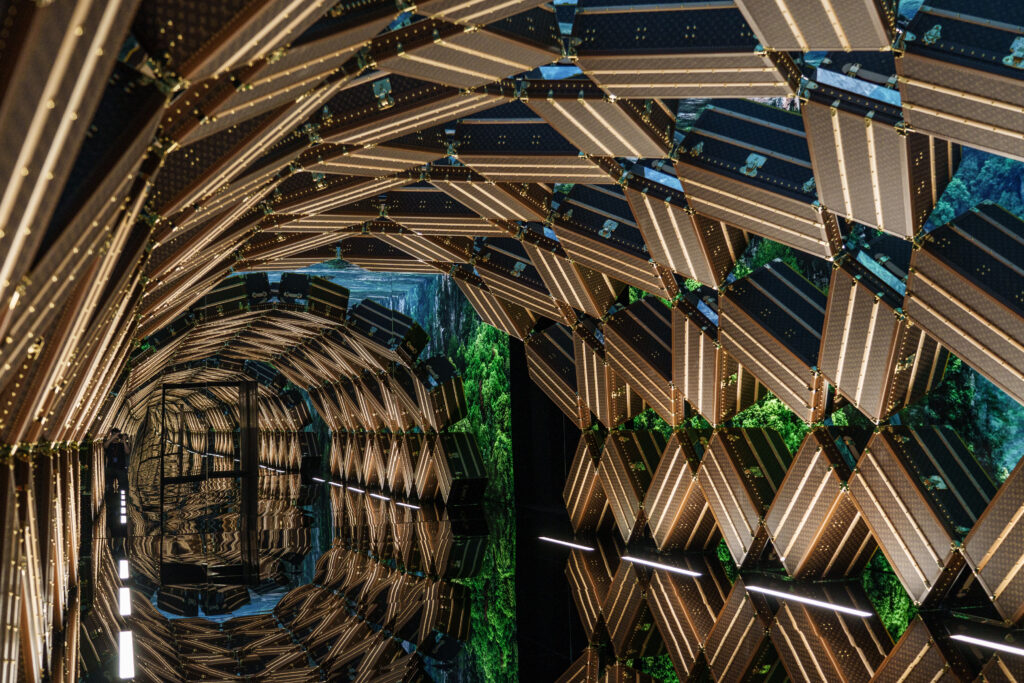
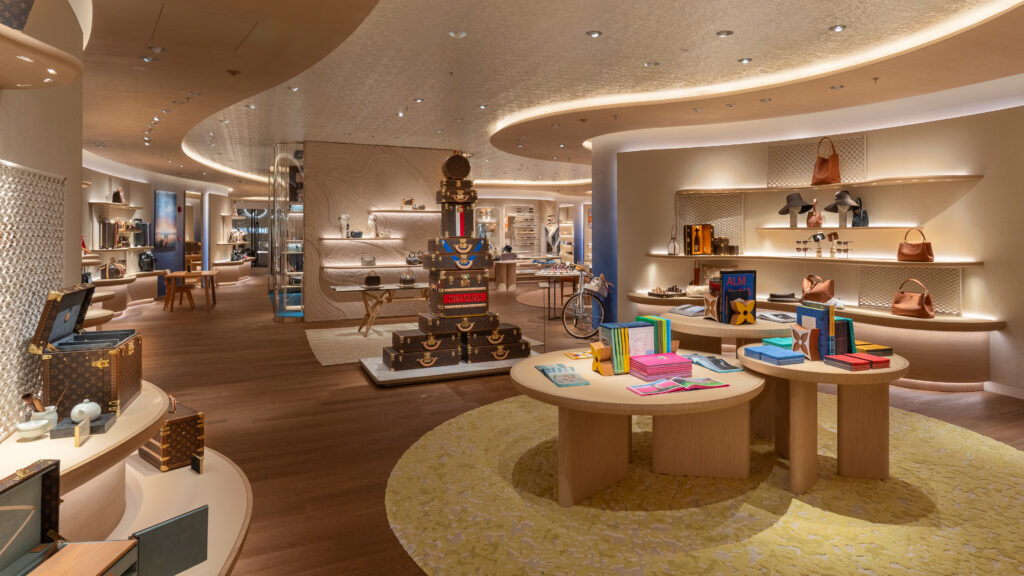
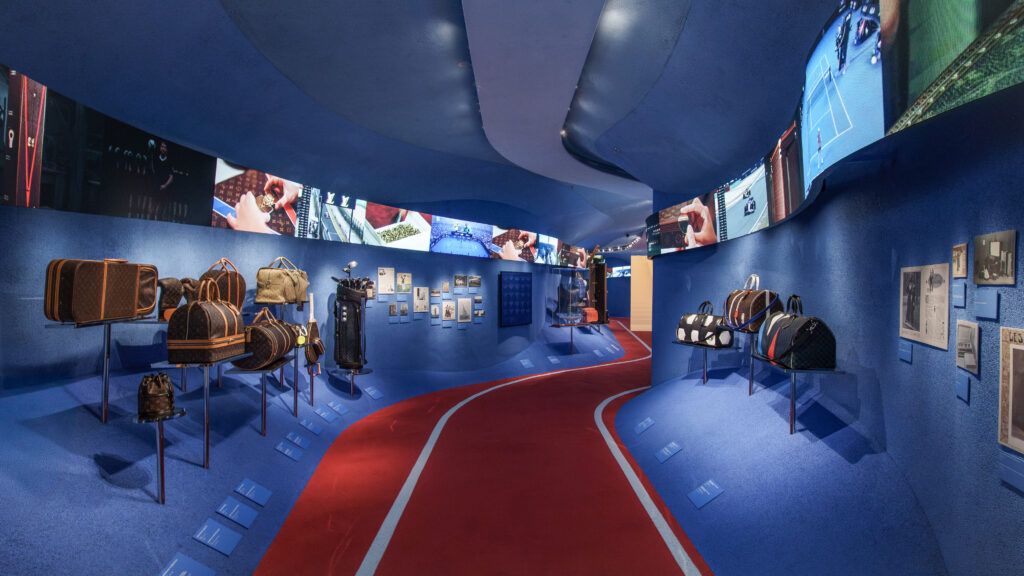
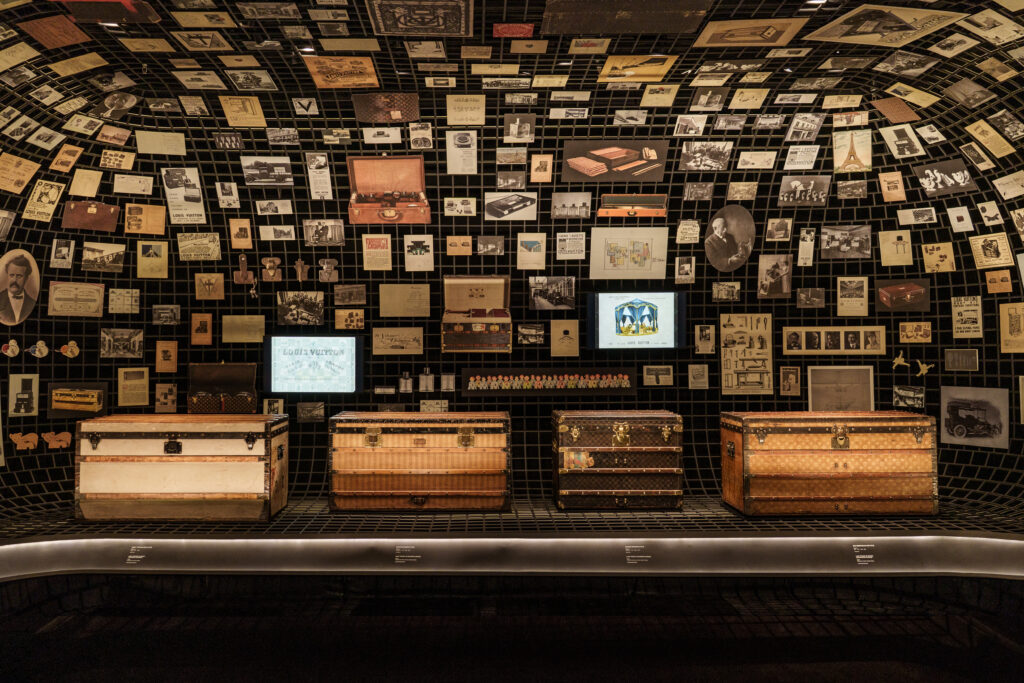
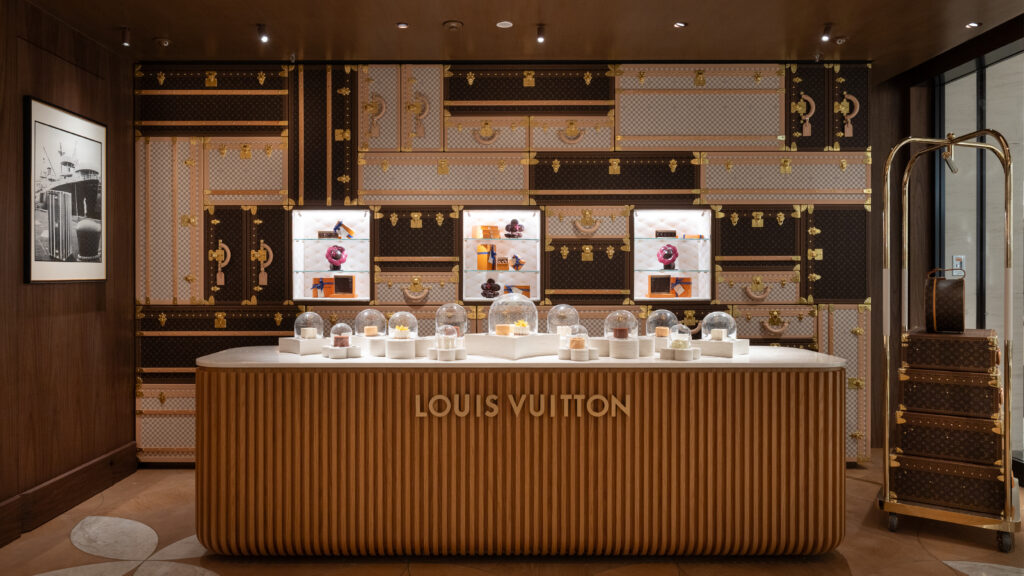
The OMA-designed exhibition space spans over 1,200 square metres across two floors with a gift shop, where visitors can get their hands on a selection of leather goods, shoes and travel items, as well as Shanghai-exclusive accessories. At the grand opening, The Louis hosted the Louis Vuitton Visionary Journey exhibition. The immersive exhibition “guides visitors on a voyage inspired by the savoir-faire of the House that connects past and future, culture and imagination”. Across the vast exhibition, items on display ranged from Gaston-Louis Vuitton’s travel sketches to reimagined LV classics by Pharrell Williams.
Cultural edge
Louis Vuitton’s hybrid model reflects the brand’s vision of the Chinese market’s changing landscape, especially in the luxury sector, where consumers increasingly demand immersive luxury experiences. Younger generations, especially Gen Z, favour storytelling over mere transactional shopping. This aligns with the larger rise of the “experience economy” in China and calls for innovation from brands. That’s why we have been seeing more pop-ups, exhibitions and interactive art-retail recently. Louis Vuitton took the chance to provide such an experience with The Louis.
Now, the luxury consumer in China seeks cultural relevance
Louis Vuitton recognises the resilience and evolution of the post-pandemic luxury market in China, where Gen Z consumers drive growth through digital engagement with brands but also crave the exclusivity of experience. Now, the luxury consumer in China seeks cultural relevance. For luxury brands, staying competitive against emerging domestic rivals means striking a balance between global prestige with localised strategies.
Hyper-localisation
Louis Vuitton has gone a step further, with many of its recent offline campaigns hyper-localised for the cities that host them. From collaborations with local boutique coffee shops and the “Nóng Hó, Shanghai” takeover at the Fotografiska in 2023, to its accompanying podcast dedicated to Shanghai, its sequel about Beijing in 2024, and even the most recent pop-up at the Postal Museum in Shanghai, all pay tribute to the culture and lifestyle of their host cities.
With travel being the essence of the Maison, hyper-localisation can make a global luxury brand feel intimate. With nationalism and local pride on the rise in China, campaigns that celebrate regional culture resonate more deeply. Louis Vuitton adopts hyper-localisation as a savvy way to stand out in a crowded market and foster emotional connections.
Travel campaign from China to the world
A few days after its grand opening, Louis Vuitton unveiled its latest travel campaign in China ahead of its global launch. Called Spirit of Travel, it is a photography campaign in partnership with American photographer Alec Soth, travelling to the sublime sights of China and showcasing Soth’s unique blend of documentary realism and poetic artistry, with images featuring Louis Vuitton luggage blending into the scenery. The campaign video is also shown at the “Trunkscape” installation in The Louis.
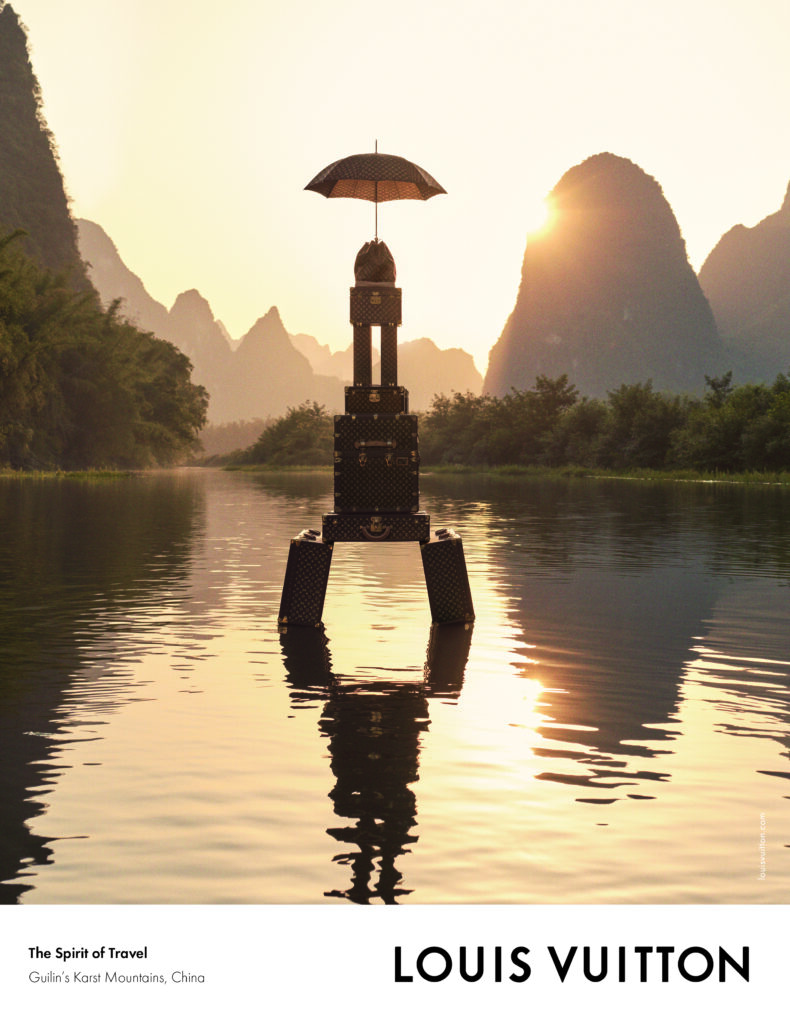
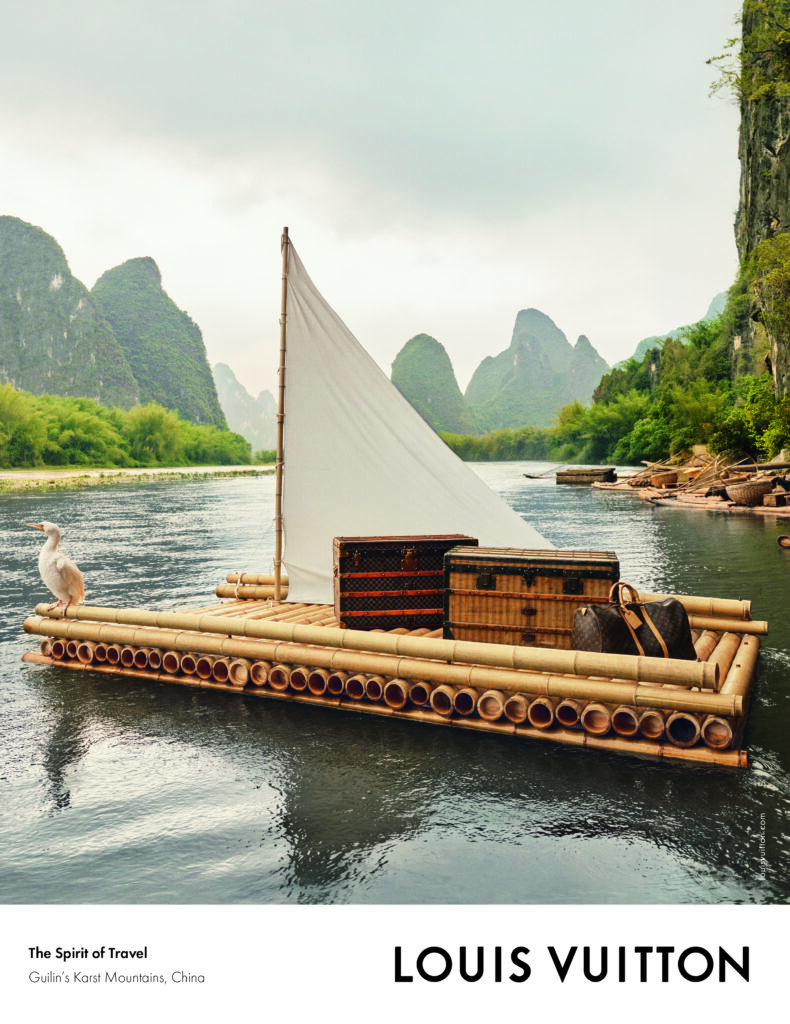
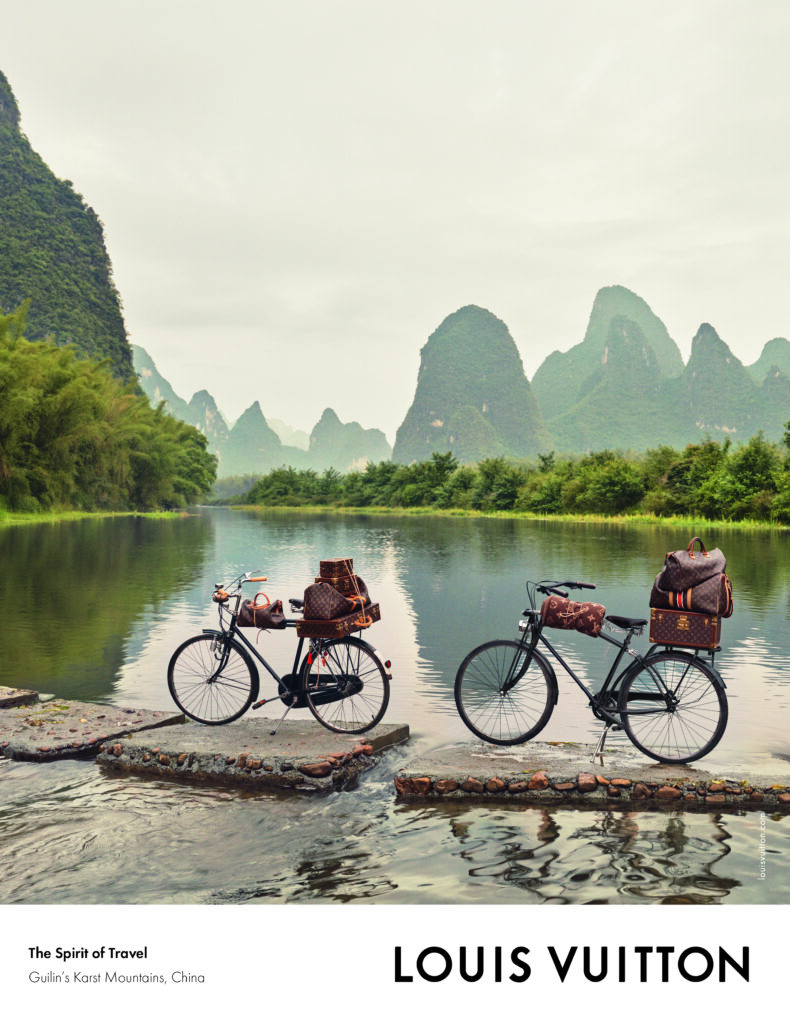
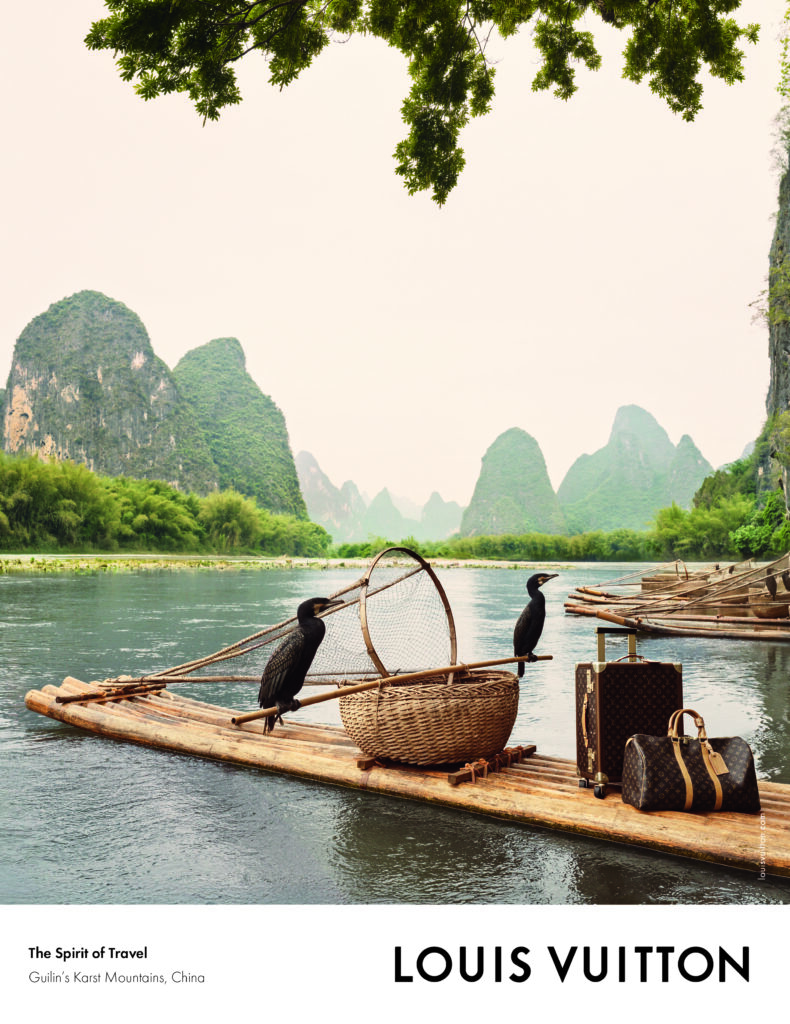
For Louis Vuitton, the campaign further emphasises its roots in intercontinental travel while also highlighting the brand as a cultural bridge in luxury. Leveraging the growing interest after its reopening in 2023 and the recent visa waivers for cross-border travellers, the campaign reinforces the universal narrative of Louis Vuitton. The first part of the campaign focuses on Lijiang and Guilin, with two follow-up series to be unveiled later.
Louis Vuitton has aligned the ideas of hyper-localisation and experience economy together with The Louis, but it is also a continuation of its localisation campaigns in China. As the ship is not a pop-up and is likely to remain, it has been reported that Louis Vuitton is already planning future exhibitions and experiences at the location. In fact, it hosted a 24-hour event for select guests just before its public opening, which included activities such as a midnight screening, sunrise Tai Chi, an illustration workshop, and a culinary masterclass. With small activities like this, The Louis has the potential to build a community of affluent shoppers in the centre of the new luxury hub of Shanghai. While the docking of The Louis brought the world, especially France, to Shanghai, “The Spirit of Travel” is taking it a step further and taking China to the world.




